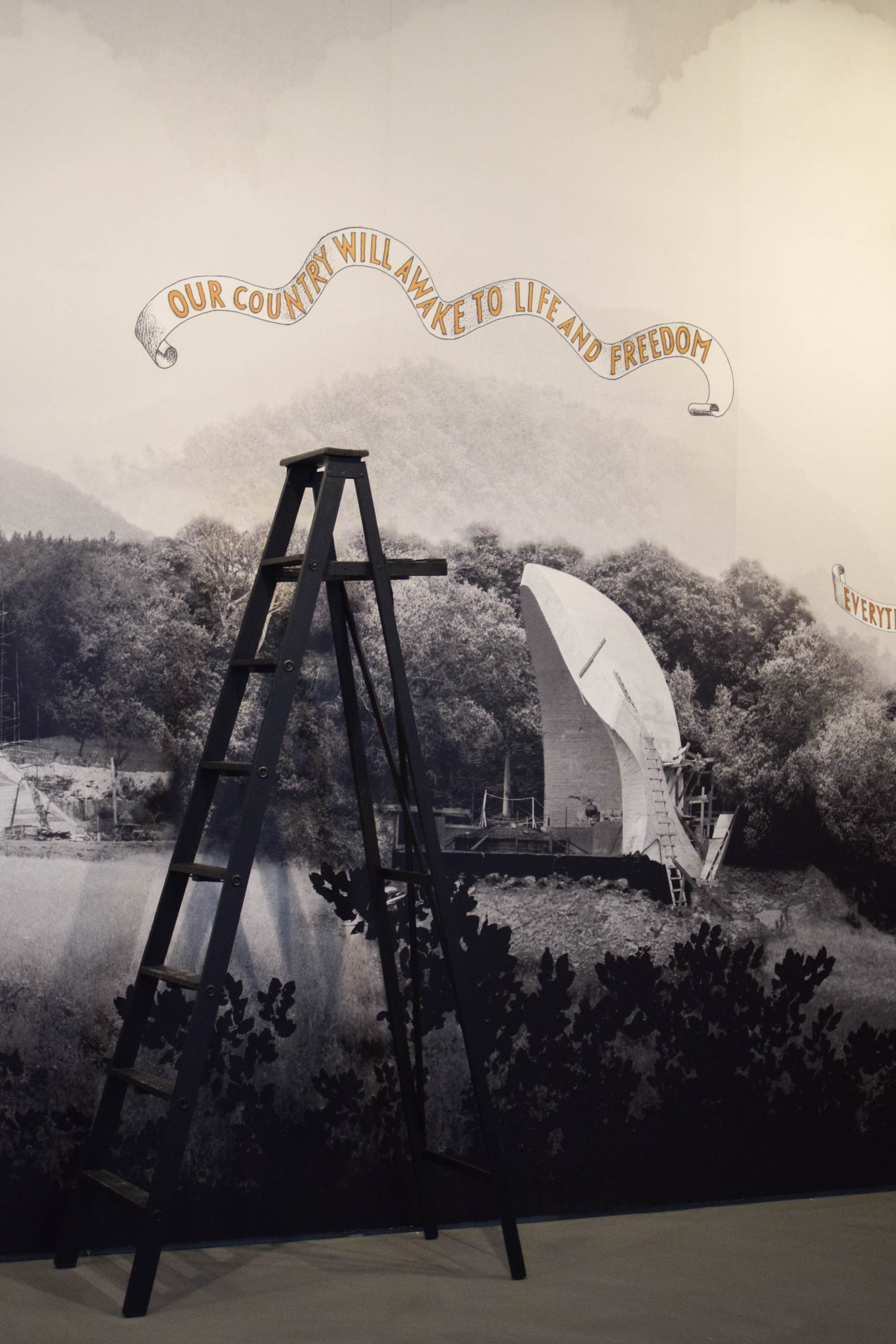Jasmina Cibic considers national identity through art and architecture
“How do governments instrumentalise culture for the formation of national identity and representation?”
This is a question that Jasmina Cibic’s art considers through her multidisciplinary, multi-room, site-specific exhibition, Everything That You Desire And Nothing That You Fear. Showing in DHC/ART Gallery, the exhibition explores the themes of national culture and its production. Curated by Cheryl Sim, the collection of artworks look explicitly at the former nation of Yugoslavia. and concepts of borders and nationality connected to this country that no longer exists.
DHC/ART is a vast gallery, with many floors and rooms. Everything That You Desire And Nothing That You Fear is exhibited in the entire space, with each room dedicated to a different art piece that compliments and connects to the other works. Certain details tie the rooms together in a cohesive way, such as a subtle inclusion of the same pattern, or colour palette, in every room. The artworks shown in these spaces include short videos, dance performance videos, an in-progress tapestry and a large mural.
Walking through the gallery’s distinctive rooms adds excitement to the viewing experience, and further solidifies the themes and ideas of national culture and identity that Cibic presents. Through the focus on a nation and a national identity that don’t exist anymore, having been separated into new, distinctive nations within new borders, Everything That You Desire And Nothing That You Fear considers how the political and the personal connect and intertwine within cultural identity.
As explained in Sim’s curatorial statement, this interdisciplinary, site-specific exhibition uses the subject matter of Yugoslavia and its political and economical history as a lens, “through which to study the employment of art and architecture… in an attempt to achieve the ultimate display of dominance for (inter)national audiences.” The development of the exhibition addresses the contrast between private and public spaces, which also ties into greater themes of the exhibition. Everything That You Desire And Nothing That You Fear considers how art and architecture—and more generally, culture—can be used politically to construct perceptions and formations of national identity.
A workshop titled A Dance Of Symbols will be held in connection to the exhibition. It is organized and run by Leisure—a creative, conceptual, artistic collaboration between Montreal-based artists Meredith Carruthers and Susannah Wesley, who have been involved with exhibitions and creative projects all over Canada. Working together through Leisure since 2004, the group describes their focuses and practices as engaging “with cultural and historical narratives through research, conversation, published texts, curatorial projects and art production.”
For A Dance Of Symbols, Leisure takes inspiration from Expo 67. The Expo, which took place in Montreal in 1967, encouraged different countries and nations to represent themselves through the way of pavilions. The pavilions featured events, performances and art, which aimed to share respective national identities. It is from this that A Dance Of Symbols takes influence, along with the general aesthetics and style of the 1960s. In the workshop, participants can create, through a series of stations, a personal symbolic object. It incorporates details like gradients, stamps and stencils, participants can create these items, which will then work as props for a live dance-inspired composition
The overall exhibition shares a dimensional, dynamic view of the history of Yugoslavia. Through various mediums and forms, Cibic investigates many different complexities of the relationships between borders, identities, and the political and personal. Deploying these through art and architecture creates impactful work that allows the artist and viewer alike to further explore the ties between national and personal identities, cultures and borders.
Everything That You Desire And Nothing That You Fear is exhibiting at DHC/ART until March 3.
A Dance of Symbols is available to groups with a reservation. For the general public, the workshop will be available during the Family Open House on Jan. 26, from 2 p.m. until 4:30 p.m.
